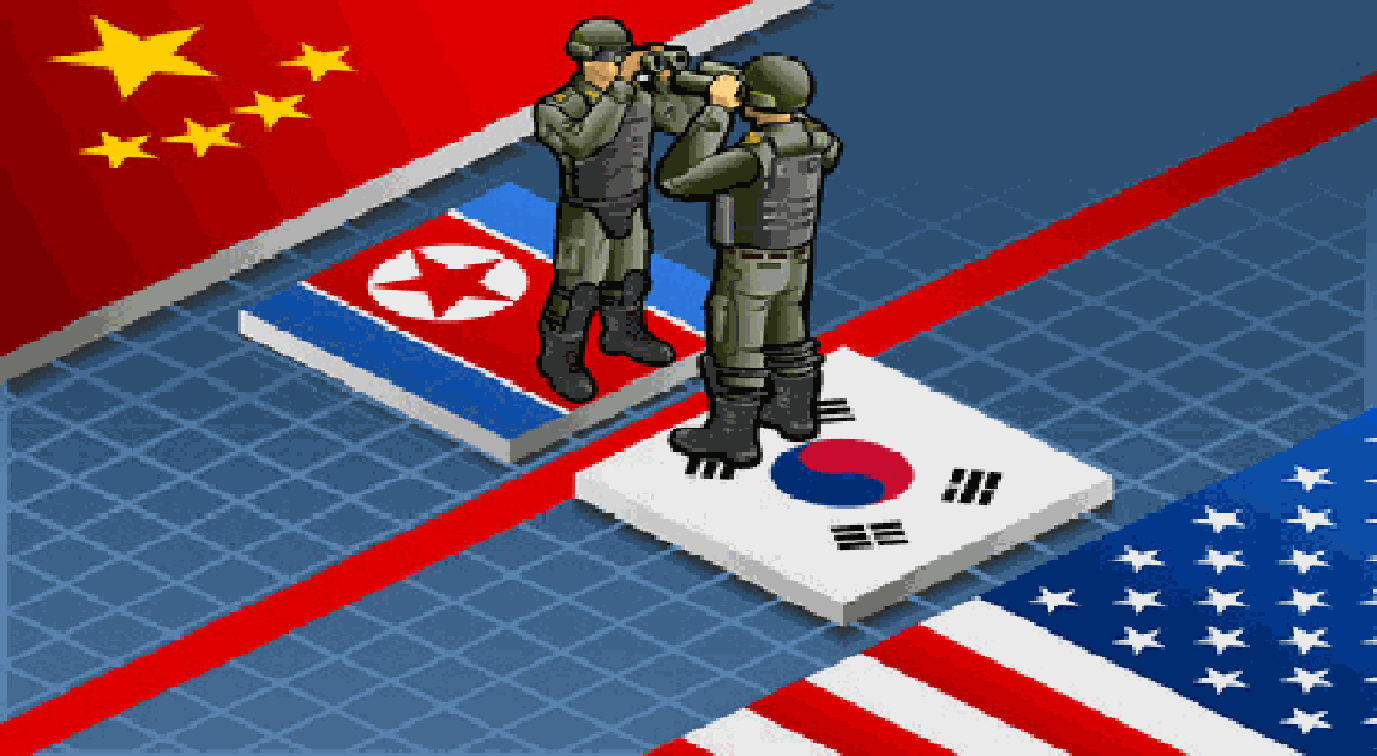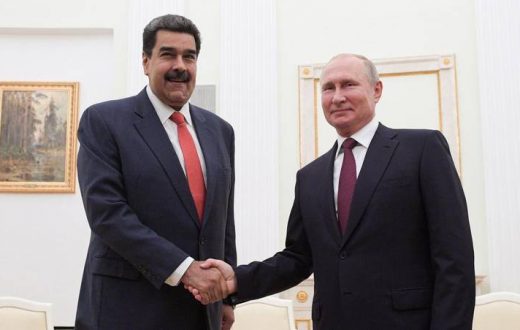D.P.R.K. has recently threatened the bombing of the island of Guam, containing more than a 160 000 Americans, and American military infrastructure. In the past, we’ve seen that D.P.R.K has consistently threatened the bombing of the USA. But does this threat pose a greater risk than the usual ones by Pyong Yang, which Washington usually discards? Or has the nature of D.P.R.K’s threats changed, bringing to light recent events?
Going down the memory lane: what went wrong
Analysts agree that North Korea tends to get aggressive during the month of August, due to the joint military exercises carried out by the United States and South Korea
North Korea had been considered an outlaw because it consistently threatened USA’s ally South Korea, and the armistice agreement that divided the Korean Peninsula in 1950. Yet, tensions escalated when North Korea threatened to leave the nuclear non-proliferation treaty in 1993, which alerted the entire world about North Korea’s nuclear programme. USA reacted by engaging in negotiations with North Korea, using the easing of commercial and diplomatic relations in exchange for North Korea’s cooperation. Consequently, North Korea agreed to freeze their nuclear weapons programme in return for heavy fuel oil and two light water reactors. However, as with all political rivalries, distrust grew within the two opponents. The US helicopter crash in Pyong Yang, and the arrest of the surviving US pilot brought diplomatic ties back to square one. At the same time, North Korea denied the entry of IAEA inspectors in to its nuclear facilities.
The 2000s saw relations deteriorate further:
- In 2002, USA held back a shipment of Scud missiles from D.P.R.K. bound to Yemen. D.P.R.K. referred to this as an act of piracy.
- In the same year, President George Bush labels North Korea as a part of the axis of evil for continuing to build weapons of mass destruction and threatening international peace and security.
- In 2003, North Korea decided to leave the Nuclear Non proliferation treaty and the armistice agreement that prohibits nuclear weapons in the Korean peninsula, stating that it did not want to be bound by regulations set forth by the IAEA, a step towards greater isolation, a principle enforced by Kim Il Sung, which later become the basis upon which North Korea’s foreign policy was built upon.
- In 2005, North Korea admits to developing nuclear weapons for purposes of self defence, a move considered counter-productive to the 6 party talks that the USA played a role in.
- In 2006, D.P.R.K. tested missiles in an underground facility which caused the UN to impose economic sanctions. Earlier in the year, the D.P.R.K. fired 7 Taepaedong-2 missiles, which possessed the capacity to hit the United States.
- After scrapping all political deals with South Korea in 2009, North Korea sunk a South Korean warship in the Cheonan sea. This prompted anger in the United States, a country committed to the security of South Korea, as per the mutual defence agreement it has with South Korea.
From 2010 onwards, North Korea engaged in a series of missile tests, some capable of reaching Alaska. In 2015, North Korea reactivated the nuclear facility in Yong Bon, which was a political loss to the United States having mediated its closure in the past. Consequently, the United States imposed targeted sanctions on the Strategic rocket force of the army, as well as the banking and shipping services.
North Korea : How advanced is their nuclear military program?
Fire and Fury
North Korea has made an official statement threatening an attack on the island of Guam. The KCNA, the state news reporting agency, stated that plans are being drafted to make an enveloping fire using Hwasong-12 missiles. U.S. president, Donald Trump promptly responded promising fire and fury in a situation where U.S.A.’s nuclear programme “being stronger than ever”.
Why is this threat more serious than ever?
Guam is a valuable asset to the United States. As a non-incorporated territory of the United States, its inhabitants qualify as citizens of the USA. Any casualties of a possible attack would therefore mean harm to U.S. citizens. Moreover, it has remained a strategic port since world war two. Its strategic value rests on its proximity to the South China Sea, the Taiwan straits and the Koreas; Guam hosts a port which serves as a home base to the Pacific Command and the Seventh fleet. Any harm to Guam would cripple American influence within the region, with China filling in the void of influence with its militarized South China Sea islands.
The Republic of Korea, the Philippines and Japan joining, for example would leave D.P.R.K. outnumbered and surrounded.
An angry North Korea…and an angry Trump. Analysts agree that North Korea tends to get aggressive during the month of August, due to the joint military exercises carried out by the United States and South Korea. However, North Korean aggression is expected to drastically increase with the UN Security Council tightening sanctions on North Korea recently. In the eyes of North Korea, USA is to blame for the recent UN response because of USA’s efforts to draft the new sanction in the Security Council. On the other hand, we have Donald Trump’s presidency. During his election campaign alone, Mr. Trump specified time and time again that North Korea and its nuclear weapons programme is a top priority in his own agenda. Mr. Trump responded to the recent threats with a promise of fire and fury, to make things worse. With an aggressive leader, possessing an aggressive choice of words, at the helm, the situation seems increasingly dangerous.
A military encounter seems more likely than ever.
The projections
Despite coming to the closest to the brink of conflict, tensions might ease once more, as per the cyclical trend of U.S.- North Korean relations.
But what if USA and North Korea do engage in direct hostilities?
USA’s regional allies, will rally to support the Americans- a commitment to which they promised when they entered into mutual defence agreements with USA. The Republic of Korea, the Philippines and Japan joining, for example would leave D.P.R.K. outnumbered and surrounded. Once North Korea does reach this state, its sole ally China may respond. Soon enough, the conflict will evolve into a struggle for both the Koreas, and the South and East China seas. Experts have predicted a world war three occurring in many fronts, but with current geo political developments, this front seems very likely to evolve into a world war three.
On the contrary, China may decide to engage in imposing more economic pressure on the D.P.R.K. China, in the near past, did impose a ban on the transport of fissile material to North Korea. If China decides to impose stricter measures that may handicap the North Korean economy, North Korea may be more willing to oblige. This avenue seems to end the conflict faster, and with fewer casualties on either side.
The key is China. The fate of the Korean Peninsula, and possibly the entire region depends on how Beijing would react to the crisis. Would Beijing disregard U.S. military presence in close proximity to its borders, and American support to Japan for the sake of international peace? Or would China rally to the aid of its long standing ally?
Patience would tell us.
About the Author : Isuru Abeysekara is a 19 year old who just graduated from high school in Sri Lanka. He is involved in MUN, debating and several community service projects in his locality. His interests to name a few include economics, animal welfare and international peace and security.







